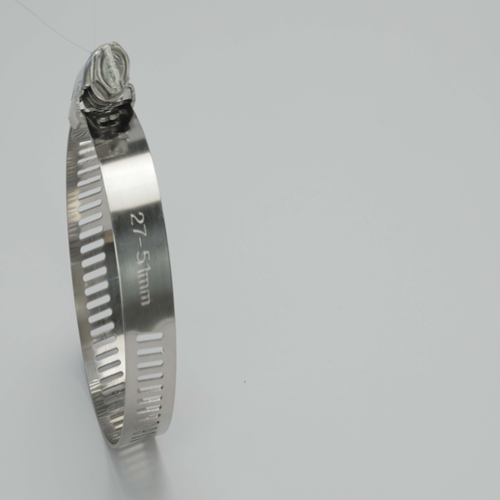- Phone:+86-17331948172 +86-0319-8862898
- E-mail: inquiry@puxingclamp.com
Dec . 05, 2024 15:03 Back to list
constant tension radiator hose clamps
Understanding Constant Tension Radiator Hose Clamps
In the realm of automotive engineering, maintaining optimal performance and efficiency is paramount. One often overlooked component that plays a critical role in this regard is the radiator hose clamp. Specifically, the constant tension radiator hose clamp has gained popularity for its ability to provide reliable and consistent performance across a range of operating conditions. This article delves into the intricacies of constant tension radiator hose clamps, their benefits, applications, and considerations.
What is a Constant Tension Radiator Hose Clamp?
A constant tension radiator hose clamp is designed to maintain a constant level of pressure on the radiator hose throughout varying temperature changes and engine vibrations. Unlike traditional worm gear clamps that rely on manual tightening, constant tension clamps use a spring mechanism to ensure consistent tension. This innovation helps to accommodate the natural expansion and contraction of the hose material as temperatures fluctuate, effectively preventing leaks and ensuring optimal coolant flow.
Benefits of Constant Tension Clamps
1. Leak Prevention One of the primary advantages of constant tension clamps is their ability to prevent leaks. As engine temperatures rise, materials expand. Traditional clamps may loosen under these conditions, leading to potential coolant leaks. Constant tension clamps, however, automatically adjust to maintain pressure, significantly reducing this risk.
2. Durability These clamps are often made from high-quality materials that can withstand harsh automotive environments. They resist corrosion and wear, which means they can provide reliable performance over a longer lifespan than many standard clamps.
3. Ease of Installation Constant tension clamps can be easier to install than traditional clamps, especially in tight spaces. Their design minimizes the need for precise tightening and reduces the risk of over-tightening, which can damage hoses.
4. Performance Consistency A consistent pressure on the hoses means that the flow of coolant remains stable, which is crucial for effective engine cooling. This stability translates into improved engine performance and longevity, as the cooling system operates more efficiently.
constant tension radiator hose clamps

Applications
Constant tension radiator hose clamps are used extensively in various automotive applications, particularly in high-performance vehicles and critical cooling systems. They can also be found in industrial machinery, HVAC systems, and any application where maintaining secure connections in fluid systems is essential. Their reliability makes them ideal for performance racing applications, where even a small leak can lead to catastrophic engine failure.
Considerations
While constant tension radiator hose clamps offer numerous benefits, there are a few considerations to keep in mind
- Cost These clamps may be more expensive than traditional options, which can be a factor for budget-conscious consumers. However, their long-term reliability and effectiveness may justify the investment.
- Compatibility Not all vehicles may require or benefit from constant tension clamps. It’s essential to consider the specific needs of the engine and the type of coolant system in place.
- Installation Although installation can be more straightforward, proper placement is crucial. Misalignment may result in insufficient pressure being applied to the hose, negating the benefits of the clamp.
Conclusion
In conclusion, constant tension radiator hose clamps represent a significant advancement in automotive technology. Their ability to maintain consistent pressure in fluctuating conditions makes them indispensable for preventing leaks and ensuring optimal engine performance. While they may come at a higher price point compared to traditional clamps, the benefits they deliver in terms of reliability, durability, and ease of use make them a worthy investment for both everyday drivers and automotive enthusiasts alike. As automotive technologies continue to evolve, the adoption of innovative components like constant tension radiator hose clamps will likely become increasingly common, ensuring that vehicles operate at their best for years to come.
-
Large Stainless Steel Adjustable American Type Hose Clamp - Hebei Pux Alloy Technology Co., Ltd | Corrosion Resistant High Torque Adjustable
NewsAug.17,2025
-
Large Stainless Steel Adjustable American Type Hose Clamp - Hebei Pux Alloy Technology Co., Ltd.
NewsAug.17,2025
-
Durable Stainless Steel Hose Clips & Clamps for Secure Fittings
NewsAug.17,2025
-
Large Stainless Steel Adjustable American Type Hose Clamp - Hebei Pux Alloy Technology Co., Ltd
NewsAug.17,2025
-
Large Stainless Steel Adjustable American Type Hose Clamp - Hebei Pux Alloy Technology Co., Ltd
NewsAug.16,2025
-
Large Stainless Steel Adjustable American Type Hose Clamp - Hebei Pux Alloy Technology Co., Ltd|Corrosion Resistance&Adjustable Design
NewsAug.16,2025




